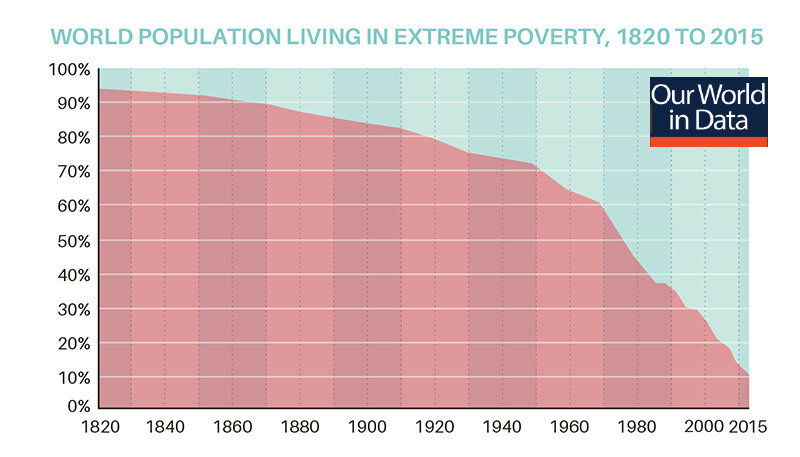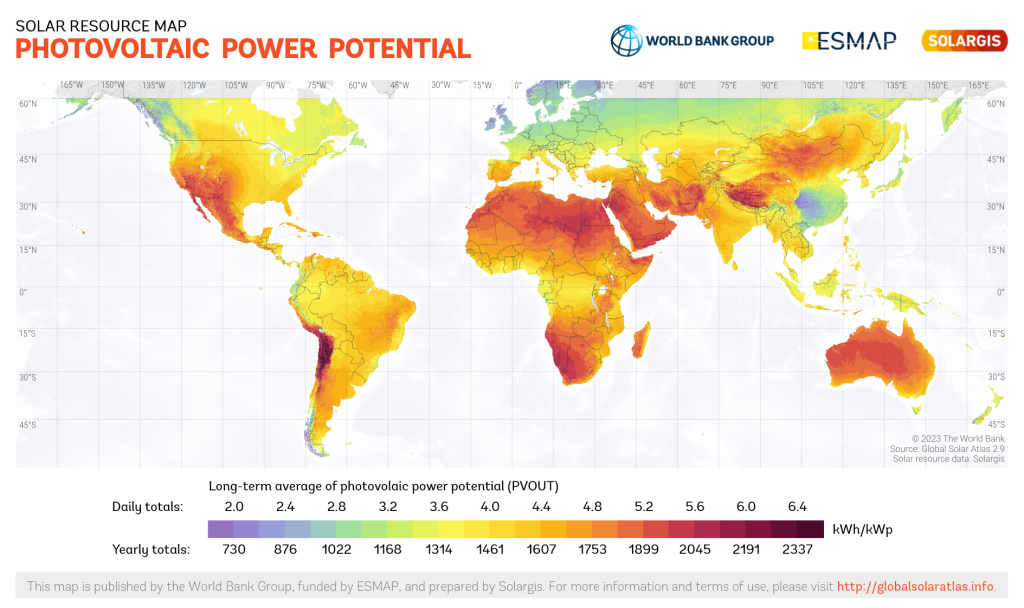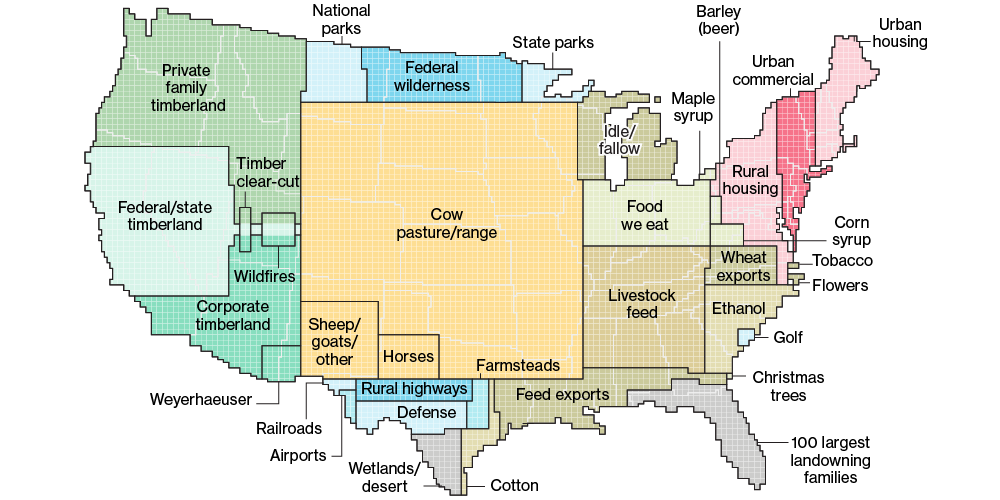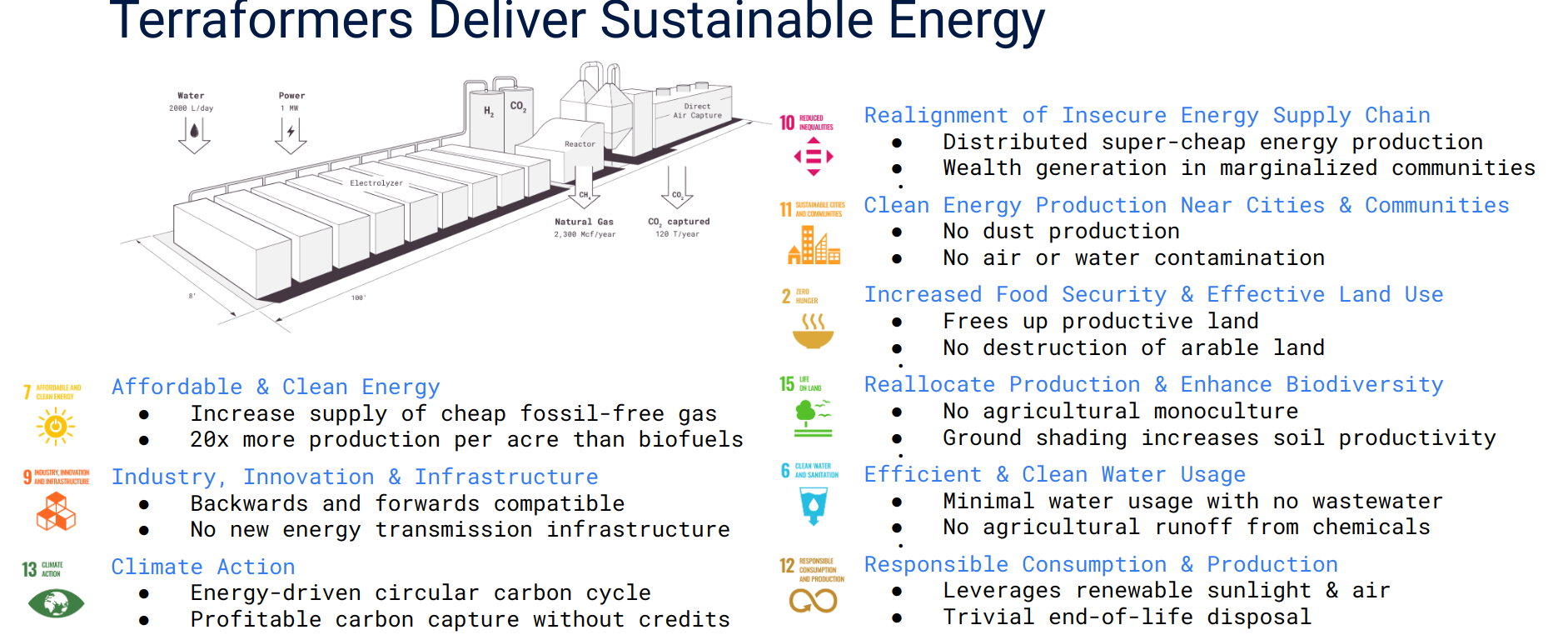At Terraform Industries, we’re making cheap synthetic natural gas from sunlight and air. Among the list of the Terraformer‘s familiar attributes we include:
- Fuel is cheap and economically desirable.
- Fuel is backwards compatible with existing infrastructure, distribution, and uses.
- Terraformer is scalable with a fast ROI, comparable to drilling but with lower risk.
- Synthetic fuel needs only sunlight and air, so no strategically fraught dependence on geology and foreign security issues.
- Clear path to unconditional energy abundance for all humans.
In addition to these, it is generally underappreciated that Terraform’s synthetic fuel has significant environmental benefits, summarized in the chart below.

Let’s go through them one by one, organized according to the various sustainable development goals.
7: Affordable and Clean Energy
Fossil fuels are ultimately derived from ancient plants while fuels such as bio-ethanol are made from agricultural products, so both are ultimately derived from solar power. Unfortunately, there is simply not enough of either, at any price, to meet the demand of a growing human population in the process of destroying poverty forever.

The Terraformer is able to convert solar energy to fuel with ~20x higher per-acre productivity than corn->bio-ethanol, meaning that our technology can deliver abundant, cheap, clean chemical energy for the masses.
9: Industry, Innovation and Infrastructure
The Terraformer, installed within utility-scale solar arrays, produces a predictable and constant supply of natural gas that is cross-compatible with existing fossil gas. That means we can use the same gas gathering, storage, injection and transmission pipelines in the same gas production areas. As we ramp up solar gas production and fossil wells naturally deplete, we can smoothly transition our entire industrial economy onto a new, sustainable energy source requiring:
- No new infrastructure build out, avoiding the political pain of eminent domain, not to mention the incredible cost and delay.
- No interruption in supply.
- No increase in price, minimizing economic disruption.
- No change in downstream applications, because the fuel is chemically identical.
Only the Terraformer can offer a smooth, swift supply side substitution for fossil fuel.
13: Climate Action
Conventional wisdom on climate has been unable to solve the collective action problem. Fossil fuels underground represent enormous wealth and short-term benefits to humanity, and no government on Earth (except perhaps North Korea) has been able to unilaterally impose the sort of grinding poverty on its populace that would be necessary to reduce consumption to a level low enough that the biosphere can naturally absorb the extra carbon, stabilizing the climate. And nor should we want to, since starving billions to death is almost certainly a worse outcome even than dealing with the impact of unmitigated climate change.
Fortunately, the Terraformer presents another path forward. The Terraformer produces fuel cheap enough that its supply will naturally displace fossil production without any heavy-handed economic policy. The way out is up – producing more fuel, but without extracting it from the ground. The Terraformer sources its CO2 from the air, so even if all our fuel is burned, it will not result in the transport of carbon from the crust to the atmosphere. It will not result in new CO2. The carbon flow is circular within the atmosphere. Of course, a decent fraction of hydrocarbons are turned into chemicals such as plastics, adhesives, medicines, carbon fiber, and so on – that effectively sequester that carbon for a long time. So Terraformer fuel is actually slightly carbon negative in practice.
Another under-appreciated benefit of the Terraformer is that it creates an economic forcing function for carbon capture via direct air capture (DAC). Other potential approaches to carbon capture depend on carbon users voluntarily purchasing offsets or paying for sequestration. This is unable to scale because almost all fossil fuel is consumed by processes that are very price sensitive. The chart below shows that the companies that consume the most fuel generate very little profit per tonne of CO2 produced, and so there simply isn’t the economic buying power to pay for sequestration at scale. As described earlier, the answer isn’t to simply ban any lower-profit use of fuel, since we all depend on fuel to produce the food we eat, the clothes we wear, the houses we occupy, and the factories that the other, more profitable companies depend on.
The Terraformer instead places DAC upstream of the point of sale, turning CO2 capture from a cost center to a profit center. It is an economic engine to scale up the deployment of DAC systems worldwide, and we don’t even need a carbon tax to do it.
Ultimately, I believe that while synthetic fuels will rapidly crush new carbon extraction from the crust, deploying enhanced weathering to deal with legacy CO2 emissions and stratospheric sulfur injection to keep a lid on heat for the next two decades will save millions of lives by accelerating the re-stabilization of Earth’s climate.
8: Distributed Economic Growth
Where do people live? Most of us live in cities and are accustomed to thinking of land as scarce and houses as expensive, but much of the Earth’s surface is completely unpopulated. Why? 99% of population density reflects where people’s grandparents were able to grow enough food to survive, before refrigeration and trucks. This requires the things plants need – sun, water, arable land, and a sensible climate.

Looking at a chart of photovoltaic power potential, one could be forgiven for thinking that the only good places for solar are the Andes and Himalayas. Solar power is so cheap that the cost of transporting it to the end user is relatively high, and so instead what we find is that the most local solar is almost always the cheapest – rooftop solar in the limit. A closer look at the solar power map reveals that the places where nearly everyone lives – the yellow area – is only 20-30% less sunny than the most scorching high altitude desert, where no-one lives. Solar PV panels are falling in price by about 15% per year, so in any given market just a few years separates solar electricity price parity.

This has two profound implications for the future of energy.
First, as we’re already seeing in the market for electricity, local development is king. Battery deployment is already undermining the need for radical new investments in electrical transmission capacity, previously thought necessary to decarbonize the grid.
The Terraformer extends this trend to chemical energy too. Soon, we will be able to deliver farm-to-table food, electricity, and hydrocarbons. The implications are profound. Even relatively small cities, anywhere on Earth, will be able to develop and deploy local supply chains for their energy and own local manufacturing, which translates into increased local demand for jobs in the green energy sector and downstream uses. High productivity jobs everywhere.
Second, the Terraformer’s ability to produce abundant hydrocarbons anywhere on Earth that people live means that the age of globalized strategic interdependence on thousands of enormous oil tankers, guarded by the US Navy, bringing oil from the Middle East to the rest of the world is coming to an end. No longer will your country’s access to energy depend on foreign buying power, beneficial geology, or arcane international relations. This will have all kinds of interesting geopolitical implications but we’re headed for this world whether we like it or not. We believe that a world with abundant local production of cheap hydrocarbons is a peaceful, prosperous world, but we’re not there yet.
10: Realignment of Insecure Energy Supply Chain
In addition to the geopolitical implications of localized energy self-sufficiency, we will also improve the lives of the marginalized and precarious people who currently live at the ends of the supply chain. In particular, Terraformers are at least 20x more productive, on a per-acre basis, than biofuels, and they don’t require A-grade Iowan corn growing conditions to operate. To a remote desert community perpetually hovering on the brink of economic disaster, the Terraformer acts like an incredibly lucrative cash crop, as transformational as the discovery of oil in Arabia or Texas, but without needing to win a geological lottery. Anyone can deploy solar arrays and Terraformers and achieve local energy abundance and economic security. For arid areas, the Terraformer can also produce excess water as a DAC byproduct.
11: Clean Energy Production Near Cities and Communities
We already understand that every deployed gigawatt of solar PV saves one hundred lives per year, mostly from displaced coal-fired electricity and its pollution. Last year, we deployed about 450 GW globally, up from 250 GW the year before. Cumulatively we’re over 1 TW of solar, saving more than 100,000 lives per year from respiratory failure-induced premature death.
Terraformers extend this benefit to chemical energy. In displacing biofuels by using 20x less land, Terraformers also produce no dust, air pollution, or water pollution. This is in marked contrast to fossil fuel production, as well as some methods of biofuel production.
Our DAC carbon capture system scrubs most of the CO2 and some water out of the air, incidentally removing dust and smog pollutants through our filtration system. The products are carbon-neutral methane (natural gas), oxygen, and optionally we can unbundle to produce fresh water, hydrogen, CO2, or even deuterium.
2: Increased Food Security and Effective Land Use
Terraformers do not cause the destruction of arable land and even reduce demand on productive land. The US is anomalously agriculturally productive, but even so, several states worth of land are devoted to ethanol production – all of which can be substituted by Terraform’s solar synthetic product with 20x less land consumed. Even better, the land which is used for ethanol production can be put to more productive uses, since the Terraformer happily operates on arid, unproductive land.

Even more than ethanol, enormous tracts of land are used to produce livestock feed. Terraform Industries is pioneering direct solar synthesis of molecular fuel, and natural gas is just the first in a long line of reduced carbon products which will soon include gasoline and kerosene and eventually include starches, fats, and proteins. In other words, we can produce more animal feed, more cheaply, at higher quality, and with less land using the solar PV-synthesis route, than by planting corn and waiting for it to grow. There isn’t enough productive land on Earth to agriculturally produce enough food to supply eight billion humans at US standards of living, but the Terraformer shows how we can produce much more with much less.
15: Reallocate Production and Enhance Biodiversity
The incredible productivity of modern industrial agriculture has created a world largely without hunger, a towering achievement in direct contrast to our 20,000 generation legacy of near constant hunger and starvation. Endless rows of wheat, corn, soy, and winter vegetables at affordable prices would have boggled the minds of our great-grandparents, let alone our bronze age ancestors. Nevertheless, such abundance covers a disturbing truth – modern agriculture is a pesticide and herbicide-supported monoculture in the place of pre-existing forest, prairie, swamp, or other ecosystems.
There is no path to energy abundance via biofuels which does not extend this agricultural monoculture to every possible fertile corner of the Earth, due to the low intrinsic CO2-capture efficiency of even the best plants. The only way to achieve post-carbon energy abundance is through electrical synthesis, which is much more productive than plants, mostly because the equipment doesn’t have to keep itself alive! Cheap energy requires cheap power, and the cheapest power is solar power, from which we get 20x higher productivity than agriculture. If someone finds an even cheaper source of power, we’ll use that too!
Even solar deployment on arid land is often a net biodiversity benefit, since the panels shade the parched ground “for free”. Shading improves moisture retention and increases insect biodiversity, effectively halting or reversing the process of desertification which has steadily progressed since the end of the last ice age and accelerated with global warming and increased agricultural pressure.
6: Efficient and Clean Water Usage
Communities, particularly in arid areas, are justifiably concerned about water scarcity, especially as rivers begin to dry up, glaciers melt, and traditional water allocation methods hit their limits. Biofuel production is a climate-healthy alternative to fossil fuels but often requires more water, not to mention more land, than we can readily make available.
In contrast, the Terraformer sips water, only requiring a few thousand liters per day per MW – barely enough to irrigate a lawn on the same small foot print. In areas with insufficient water to supply the Terraformer, its DAC component can be adapted to recover the water it naturally captures in its CO2 sorbent material, producing as much water as it needs and, if desired, even more. That is, a Terraformer installation can provide not only local employment, local energy, and a local source of wealth generation through energy sales, it can also provide a source of water.
Unlike conventional gas production, the Terraformer involves no drilling into subsurface rock, so it cannot disturb groundwater. The gas we produce is free from the usual fossil contaminants, so we have no difficulties with spill containment or waste disposal. Unlike agriculture, we do no spraying or irrigation, so there’s no contamination of surface water either. Unlike biofuel production, we have no toxic byproducts to treat or dispose of. We aspire to deliver a community-friendly local energy production system that actively improves the environment in which it’s placed.
12: Responsible Consumption and Production
In a pre-Terraformer world, sustainable growth presents us with a contradiction in terms. From a humanitarian perspective, we want to increase the supply of cheap energy and cheap goods to people all over the world, by which they can lead longer, happier, more productive lives. From an environmental perspective, there is simply no way this can be done without further rampant destruction of limited natural resources and the ongoing pollution of the atmosphere with CO2 by which we are heating the Earth beyond any sensible limit.
With the Terraformer, this impossible contradiction goes away. Why? It is fundamentally a more efficient, more productive root source of wealth for humanity. It allows us to price the production of more energy at the rapidly falling cost of energy, rather than the cost of exploring and drilling into ever deeper, ever poorer oil-bearing rock. Its fundamental inputs, sunlight and air, are essentially unlimited on any scale meaningful to the next few centuries of growth and development. We can actually “have it all” – democratized renewable energy production and consumption driving global growth without the environmental horrors of oil drilling and melting ice caps.
Like any machine, the Terraformer does not last forever, so we should look to its full life cycle to ensure we’re not bequeathing some nasty toxic legacy to our children and grand children. The Terraformer is deliberately designed to use only generic, abundant materials for its construction, so mass deployment does not require enormous new mining development or new supply chains for exotic materials. The Terraformer and its solar panels are so environmentally inert and non-toxic that they could be land filled without any concern, if they weren’t instead recycled. If, after some decades of cheap solar synthetic production, we discover some other, superior way to make energy, it is trivial to de-rack the solar array and return the land to its primordial condition, only now persistent shading will likely have increased plant and animal abundance in the area. The Terraformer will have lower persistent impact on the land it uses than almost any other human land use, including development, agriculture, mining, grazing, or even extensive hiking.
Vision For The Future
Let’s integrate these disparate parts of the vision to understand how the Terraformer’s approach to synthetic fuel will transform our future this century. Instead of a miserable century of rising temperatures, increasing geopolitical strife, fuel scarcity, and economic malaise, we are poised to address the climate problem head on, provide copious energy with simplified supply chains to every human on Earth, and ensure that the bounty of cheap solar flows to all our energy sources.
In the short term, we’ll see growth of solar PV, and solar synthetic fuel through the sunnier and more developed parts of the world, eventually extending everywhere on Earth except perhaps the UK and Nordic countries. Of these only the UK has significant population and demand for energy and may end up relying on wind – but it hardly matters in the context of climate.
Energy abundance in the 2030s will also greatly increase the availability of low cost plastics, metals, cement, and desalinated water, among many other bulk products.
Through the 2040s, as the renewable electricity and synthetic fuel supply chain is completed, we’ll see lateral growth into production of more complex molecules, including animal feed and healthier staples, allowing us to focus agricultural effort on the highest value products and free much of Earth’s highly ecologically productive areas for cultivated restoration of a curated wilderness, giving humans the choice to live in large, dense modern cities or in some kind of anarcho-techno-primitivist state, only without involuntary hunger or tooth decay, or anywhere between.
The key unlock is that the natural world, which depends on photosynthesis for its energy, can decouple and co-exist with the industrial human world, which will depend on much more productive solar PV and eventually perhaps fusion for its energy. Because solar PV is a thousand times more productive than plants, our civilization can continue to grow its energy consumption far beyond what the natural world can provide without consuming more than a small fraction of the available land.
Here are some renders from Midjourney to illustrate our vision of a future that’s abundant for both humans and nature.
Here’s Yuma in 2040.
This is Tuscon in 2045.
This is Mojave in 2050.
And Barstow in 2060.
Solar is now cheap enough that synthetic fuels are coming no matter what! Our choices can only affect how quickly we’re able to accelerate the retirement of catastrophically harmful legacy energy sources, and how beautifully we cultivate the world that comes after.

